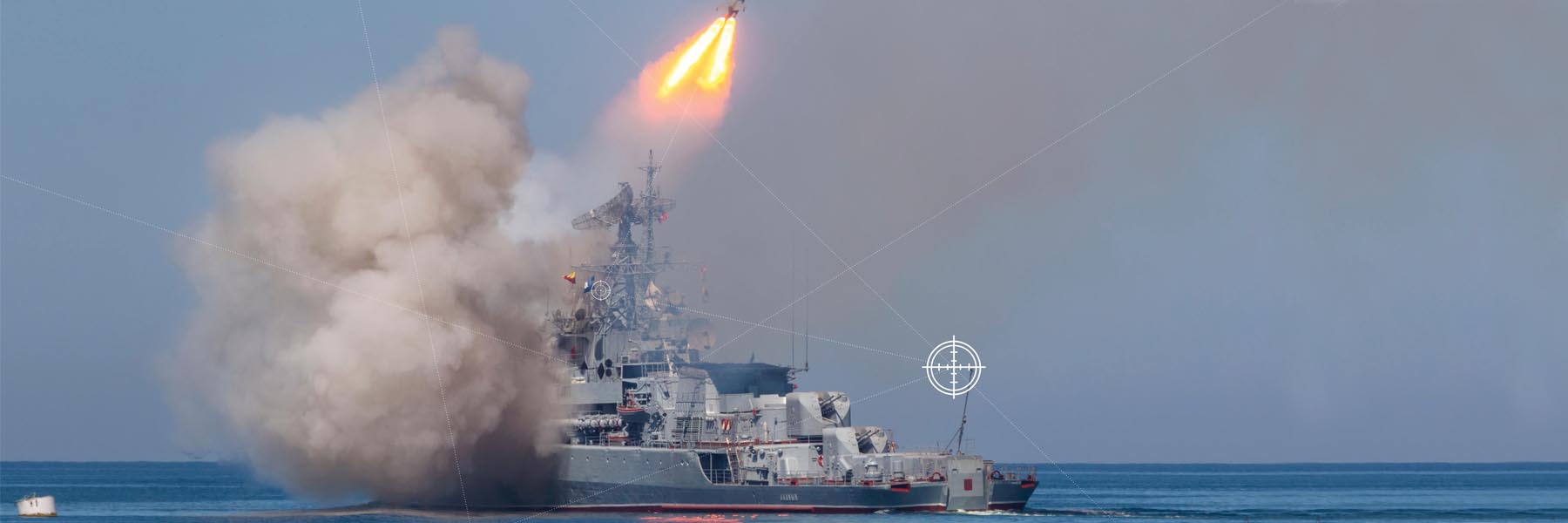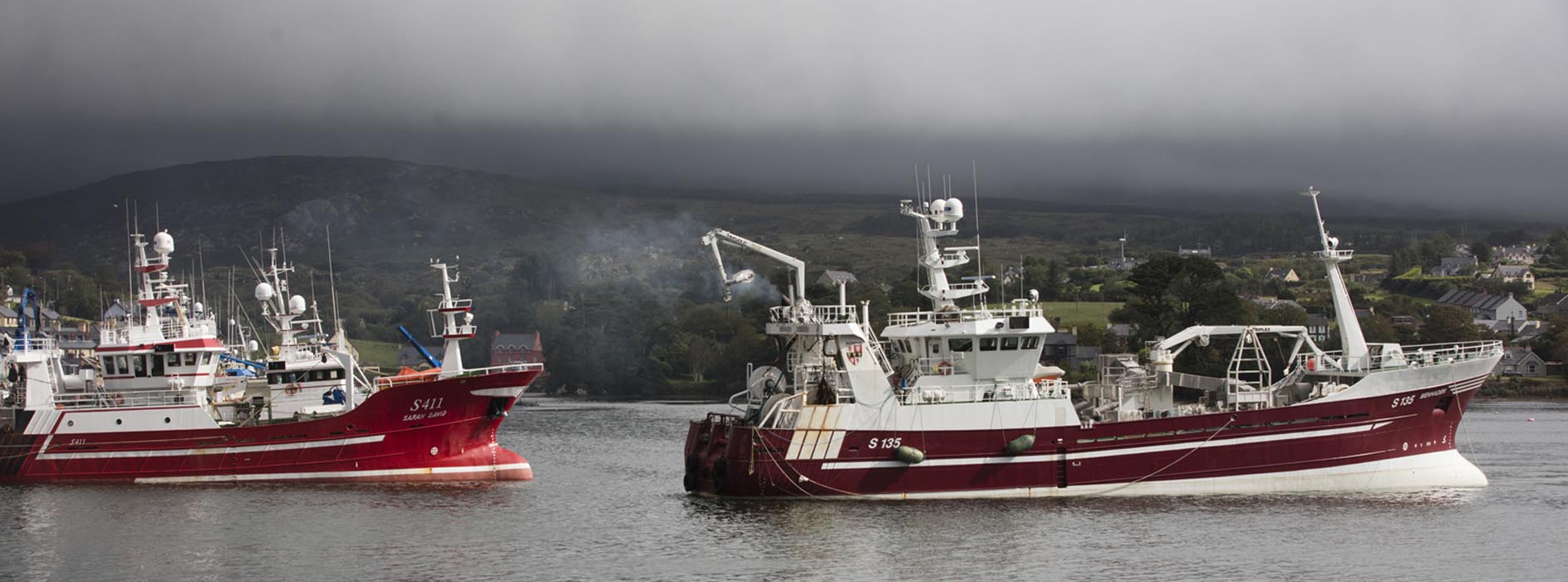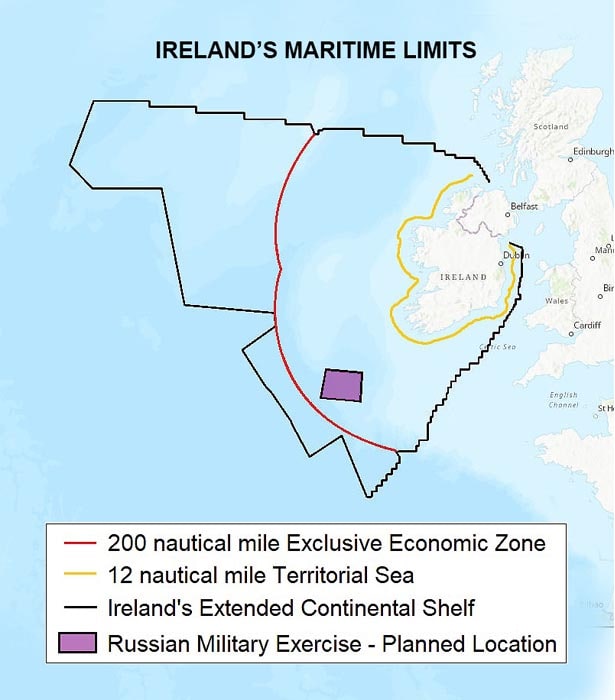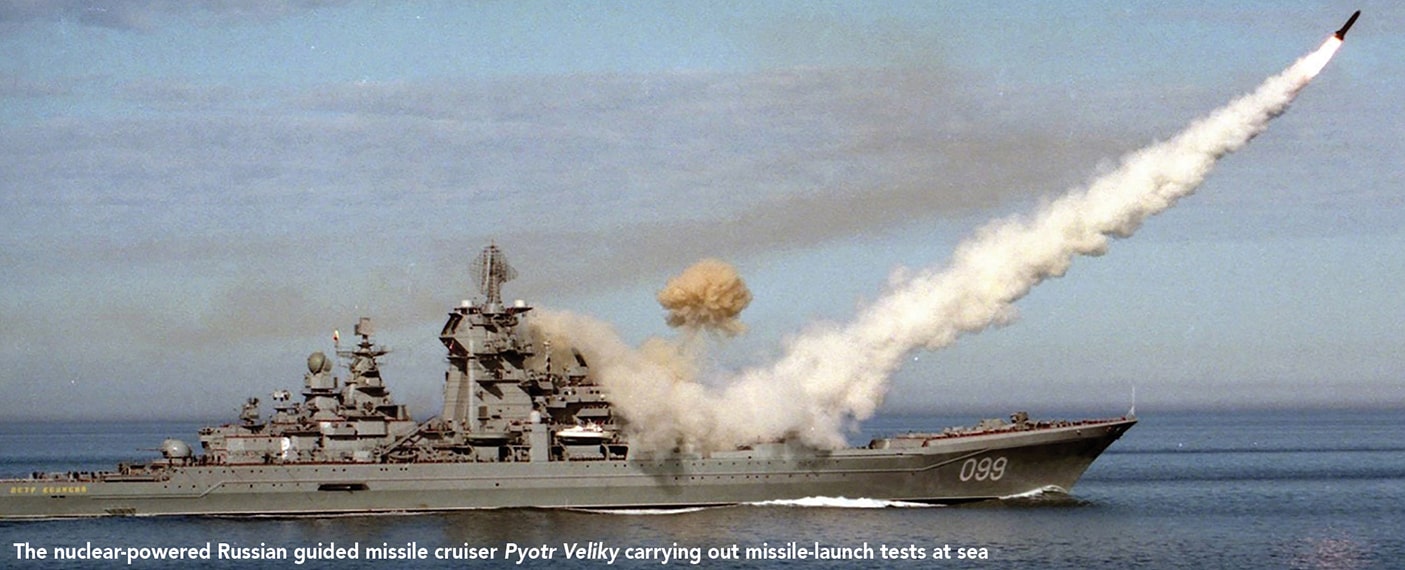The big blue

The law about military exercises in Irish waters
Any decision to challenge future military exercises within Ireland’s Exclusive Economic Zone will hinge on several factors. Our adjacency to an area of ‘key world importance’ suggests that this issue will certainly raise its head again, warns Lieutenant Commander Shane Mulcahy.
On 20 January this year, the Russian news agency TASS confirmed plans to conduct a month of major naval exercises spanning multiple continents and comprising hundreds of military ships and aircraft. According to a ministry spokesperson, the exercises would “encompass seas washing Russia, and also world ocean areas of key importance”.


In the succeeding days, and amidst a frenzy of media attention, it became clear that one such area considered by the Russian Defence Ministry to be of “key world importance” was the North Atlantic approaches to Europe – a mere 240 kilometres south-west of the Cork coastline.
This revelation prompted calls for Irish Government intervention, a spirited mobilisation of the fishing community, and an eventual de-escalation by the Russian ambassador by announcing that the exercises would be moved “further offshore”.
These military manoeuvres proceeded without further incident and have since been overshadowed by the appalling actions of Russian military forces in Ukraine. Nonetheless, significant questions remain about Ireland’s ability to control activities occurring off our own coastline.
Could the legitimacy of these exercises be challenged successfully? What legal basis, if any, can be relied on in future to ensure that Irish waters remain the preserve of peaceful pursuits? The answer is far from settled.
‘Irish waters’ v the EEZ
For centuries, states have claimed sovereign rights over their adjacent waters. The extent of this jurisdiction was originally defined by the reach of coastal cannons – if you could fire and strike your target at a certain distance, you could effectively control the water space that it occupied. With passing time and technology, states continued to expand their claims, at varying rates and ranges.
The 1982 United Nations Convention on the Law of the Sea (UNCLOS) sought to standardise and codify these extant aspects of maritime law. In doing so, it created a single point of truth, often dubbed ‘the constitution of the oceans’.
UNCLOS enshrined the right of every coastal state to a 12-nautical-mile territorial sea, within which the full range of national jurisdiction could be exercised, albeit subject to a few caveats (section 2, article 3). Essentially, within 12 miles of the coast, the full breadth of the law of the land applies, and normal civil and criminal jurisdictions abound. Beyond this limit, however, coastal-state jurisdiction quickly dissipates.
Under part IV of UNCLOS, coastal states enjoy an ‘Exclusive Economic Zone’ (EEZ) out to 200 nautical miles from their coast, with enforcement jurisdiction over economic activities therein. This includes regulatory control of fishing activities, hydrocarbon exploration, and any other natural resources in the water or below the seabed (article 56).
As such, the coastal state can, insofar as UNCLOS provides, prevent activities that impinge on its ability to enjoy economic access exclusively within these waters. This right of exclusivity is balanced, however, by the fact that the oceans beyond territorial waters, including the EEZ itself, are considered a part of the high seas – one of the least regulated regions left on the planet.
The high seas are, by definition, a space over which no state can exercise sovereignty, where ‘the freedom of the high seas’ reigns supreme (article 89). This concept of high-seas freedom has prevailed for centuries – more recently being committed to text so as to include express freedoms within UNCLOS.
These include freedom of navigation and overflight, and the freedom to lay submarine cables or pipelines, and are enjoyed by all states regardless of their location, even within the EEZ of another state. Further freedoms are either unenumerated or implied through specific exclusion.
None are absolute – every high-seas freedom is balanced and bordered by the freedoms and rights of others. It is in this context that one must consider the legal implications of recent (and, indeed, future) military manoeuvres off the Irish coast.
The legal basis
Freedom to conduct military exercises on the high seas is traditionally recognised as being a component part of customary international law, adjacent to those high-seas freedoms captured in UNCLOS article 87. These high-seas rights are transcribed to exist equally in the EEZs of coastal states, in accordance with UNCLOS article 58(1).
It is noteworthy, however, that no UNCLOS provision or article specifically addresses the conduct of military exercises. In fact, article 88 requires the high seas to be reserved for peaceful pursuits.
This issue was addressed specifically during law of the sea negotiations prior to 1982, with most participants supporting the right of foreign exercise in a state’s EEZ. Several coastal states have attempted to challenge this presumptive right, however, by submitting declarations against foreign military exercises in their EEZs without their consent.
These states include Bangladesh, Brazil, Cape Verde, India, Malaysia, Pakistan and Uruguay. China, North Korea, and Peru have gone further than mere declarations, having been willing to use force to assert their declared rights on a number of occasions.
These attempts to prohibit foreign exercises in EEZs have garnered very little international support and are generally considered void of any legal status.
The general consensus, and that supported by NATO and most western nations, is that “military activities, such as … launching and landing of aircraft … exercises, operations … [in the EEZ] are recognised historic high-seas uses that are preserved by article 58” (1994 message from the President of the United States transmitting the UN Convention on the Law of the Sea).
That said, the rights of foreign militaries to operate or exercise in a state’s EEZ are far from absolute. Article 58 of UNCLOS continues at subsection 3 to require states operating in the EEZ of another nation to have due regard to the rights and responsibilities of the coastal state – specifically:
“In exercising their rights and performing their duties under this convention in the exclusive economic zone, states shall have due regard to the rights and duties of the coastal state and shall comply with the laws and regulations adopted by the coastal state in accordance with the provisions of this convention and other rules of international law, insofar as they are not incompatible with this part” (emphasis added.)
The legal consequence of this requirement for ‘due regard’ may become pertinent if, for example, the exercise poses a specific risk to a marine protected area. States that adopt specific conservation measures, or designate marine protected areas, may enforce such provisions (as compatible with international law) on vessels operating in or around those areas (UNCLOS (n5) article 56(1)(b)(iii)).
The right of the coastal state to enforce these protections is measured against the high-seas rights of the state conducting the military exercise, with the balance appearing in favour of the state whose actions show the requisite amount of ‘due regard’.
Exclusion zones
Another issue that can affect the legality of an exercise is the designation and enforcement of an exclusion zone, such as that announced by Russian military officials prior to its planned February manoeuvres.
These zones are not specifically mentioned or given legal status within UNCLOS, though some states may equate them to zones within which a military vessel might be seen to reasonably exercise its inherent right of self-defence (see Van Dyke, 1991).

In line with the principle of ‘due regard’, the enforcement of an exclusion zone that unduly impedes on the right of the coastal state to its EEZ will likely be considered unlawful – this will again be determined on a case-by-case basis, requiring evidence that the rights of the coastal state were unduly impinged upon.
This issue becomes particularly pertinent to our Irish example. On the one hand, announcing a 5,000-square-kilometre exclusion zone that unduly affects vessels fishing within their own state’s EEZ might well be considered an unreasonable imposition, rendering the exclusion zone and (military) exercise in general to be considered unlawful, contrary to article 58(3).
Conversely, if fishing vessels were to deploy specifically to an area for the sole purpose of disrupting a planned exercise, a similar standard might be applied in favour of the state conducting the exercise, contrary to article 56(2). In this respect, the well-publicised plans by Irish fishing vessels to disrupt the pending Russian exercises might well have raised significant legal complications.
Conflicting views
When applied to the recent exercises planned off the Irish coast, the views of various commentators remain conflicted. Speaking to the Irish Examiner, Prof Andrew Cottey (University College Cork) highlighted the importance of the location in international waters, as well as the clear issuing of warnings regarding the proposed exercises, as placing the manoeuvres clearly within the confines of international law.
Conversely, retired Trinity College professor Clive Symmons pointed out to The Times that, as no specific reference exists under UNCLOS regarding military exercises in foreign EEZs, they are at best a legal ‘grey area’ and, as such, are “not an implied high-seas freedom in this context”.
On this basis, Prof Symmons reasons that the Irish Government would have been well placed to object, and possibly even seek to prevent, the exercises from proceeding as planned.
On this occasion, diplomacy appears to have won out, with legal complications being circumvented by Russian defence minister Sergey Shoigu deciding to relocate the military exercises as “a gesture of goodwill”.
When viewed in light of the subsequent military atrocities underway in Ukraine, however, The Irish Times reported former Chief of Staff Vice-Admiral Mark Mellett opinion that Minister Shoigu’s decision was based less on goodwill or fear of legal repercussion, and was more of a hybrid tool, designed to undermine Irish and EU defence cooperation.
In any event, significant uncertainty remains as to whether or not a legal challenge to the Cork coastal exercise as planned by Russian military forces could have been made successfully. The right of states to conduct military exercises within foreign EEZs appears well founded, albeit subject to a balancing of rights and a reasonable requirement for due regard.
Notwithstanding political will, any decision to challenge future military exercises within Ireland’s EEZ will likely hinge on the exercise context, any foreseeable impact on declared areas of conservation, and the imposition of an exclusion zone without due regard for the coastal state.
These factors may all affect the legality of planned military exercises. However, their relevance to a successful legal challenge remains to be seen. Fortunately or otherwise, Ireland’s geographic adjacency to an area of “key world importance” suggests that this issue will certainly raise its head again.
Look it up
LEGISLATION:
LITERATURE:
- Gallagher, Conor, ‘Ireland “naive” about Russian influence – Defence Forces ex-chief’, The Irish Times, 13 March 2022
- Lee, Maeve, ‘Security expert says Ireland can do little to stop Russian naval exercises’, Irish Examiner, 25 January 2022
- Message from the President of the United States transmitting the United Nations Convention on the Law of the Sea and the agreement relating to the implementation of Part XI of the United Nations Convention on the Law of the Sea (US Senate, 103rd Congress, second session; Treaty Doc 103-39, p24)
- Siggins, Lorna, ‘Ireland has the right to block Russian naval drills, says expert,’ The Times, 2 February 2022
- Van Dyke, Jon M (1991), ‘Military exclusion and warning zones on the high seas’, Marine Policy, vol 15, pp147-169
Lieutenant Commander Shane Mulcahy BL is a staff officer at the Irish Naval Service’s Headquarters at Haulbowline, Co Cork.
Read and print a PDF of this article here.